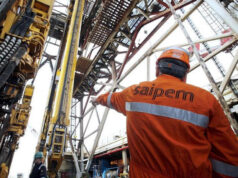While he is pleased with the outstanding performance thus far in Guyana, Chief Executive Officer (CEO) of Hess Corporation, John Hess told investors today that the company is interested in more than just its bottom line.
During his company’s 2019 fourth quarter earnings call, Hess said that he and his partners recognize that the production of oil is an important moment in Guyana’s history and it is therefore committed to helping the local authorities fulfill the promise of shared prosperity.
The CEO said, “On December 20th, (2019) the Liza Phase One development achieved first production and is expected to reach its full capacity of 120,000 gross barrels of oil per day in the coming months. We recognize this pivotal moment in Guyana’s history and are committed to working collaboratively with the government, our partners, and the people of Guyana to build a safe and sustainable industry that fulfills the promise of shared prosperity.”
Turning his attention to some exploration and development highlights, Hess told shareholders that the Liza Unity Floating Production Storage and Offloading vessel (FPSO) is under construction for the second phase of the Liza development. It is expected to start production in Guyana by mid-2022 with a production capacity of 220,000 gross barrels of oil per day.
The CEO also noted that front-end engineering design for a third FPSO, the Prosperity, is underway to develop the Payara field pending government approvals and project sanctioning. Production from Payara could start as early as 2023, reaching an estimated 220,000 gross barrels of oil per day.
From an exploration perspective, Hess said that 2019 was a “banner year” with five new discoveries at Haimara, Tilapia, Yellowtail, Tripletail and Mako. On Monday, Hess Corporation, along with the operator of the Stabroek Block, announced an increase in the estimate of gross discovered recoverable resources for the Stabroek Block to more than 8 billion barrels of oil equivalent.
Hess’ CEO was keen to note that the Stabroek block partners continue to see multi-billion barrels of exploration potential remaining.











